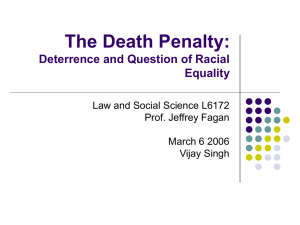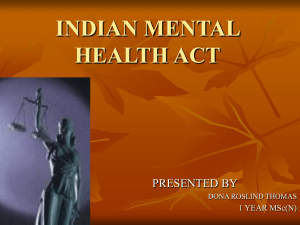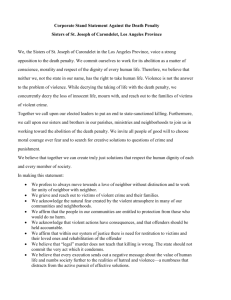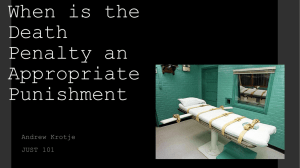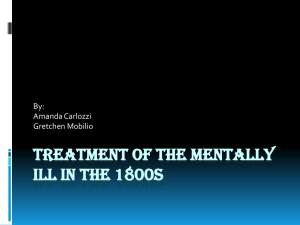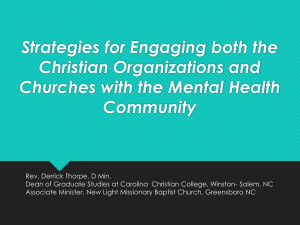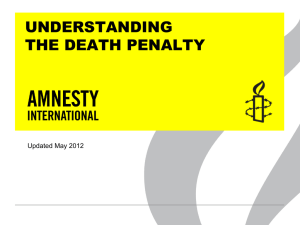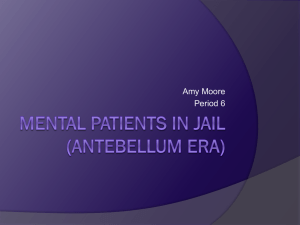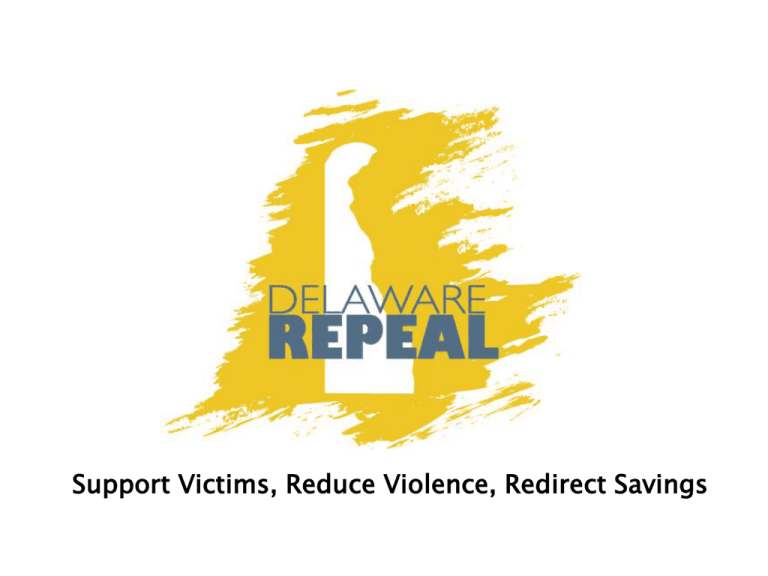
Support Victims, Reduce Violence, Redirect Savings
When murder happens, it is the family of the
victim that suffers the most and the longest,
yet our system focuses exclusively on the
murderer.
We believe that it is time to shift our focus
and put victims’ families first.
Financial support for children who lost a
parent to murder
Expanded services such as:
◦
◦
◦
◦
◦
Grief counseling
Crisis intervention
Funeral assistance
Crime scene cleanup
Emergency funds
Unpaid employee leave to attend court
proceedings
The death penalty is an unfair, racist, violent
system fraught with human error.
It is arbitrary. In the U.S., 2% of known murderers
are sentenced to death.
Race or the location of the crime are more
compelling factors than the nature of the crime.
It is not reserved for the worst of the worst.
Race-of-victim and race-of-defendant
discrimination.
PA study—blacks 4 times more likely to get DP.
Only 1% of all chief District Attorneys in counties
using the death penalty in the US are AfricanAmerican.
A recent Cornell University study of the death penalty found that 70% of
Delaware death sentences were imposed in white victim cases, although the
majority of murder victims over the same time period were black.
Death Sentence Rate per 1000 Murders (1977-2011)
Black Offender-
White Offender-
Black Offender-
White Offender –
White Victim
White Victim
Black Victim
Black Victim
178.5
51.9
25.5
88.2
Georgia
99.2
41.7
4.5
21.4
Indiana
42.3
21.6
5.6
0
Maryland
52.2
14.0
2.4
7.3
101.1
37.0
24.9
12.5
Pennsylvania
48.6
22.2
17.7
11.9
South Carolina
67.8
27.1
2.9
50.3
Virginia
64.5
18.3
3.6
2.3
State
Delaware
Nevada
In a 2005 survey of 500 police chiefs, 2% said that the death
penalty was an effective way to reduce violent crime. Higher
priorities included increasing the number of police officers,
reducing drug abuse, and creating a better economy.
Murder rates higher in death penalty states.
2007
2008
2009
Murder rate
DP
5.83
5.72
5.26
Murder rate
non-DP
4.10
4.05
3.9
% difference
42%
41%
35%
Since 1973,
140 people have been
released from death
rows in 26 states with
evidence of their
innocence. Only a
small number due to
DNA.
Every study ever conducted has concluded that
the death penalty is more expensive than life
without parole.
◦ California spends an estimated $137 M per year.
◦ Florida spends about $51 M per year.
◦ Maryland found 20 yrs of DP cost $186 M for
five executions.
Voters listed the DP last as a priority for state
spending after emergency services, creating
jobs and crime prevention.
Use of the death penalty perpetuates violence
and the notion that the use of violence to
solve problems is okay.
“Why to we kill people, to show people, that
killing people is wrong?”
Research has shown that murders actually
occur more often in the weeks and months
immediately after an execution.
Family members who have lost a loved one
to murder.
Family members of the person executed.
State officials and state employees who work
with death row prisoners and who must
oversee executions.
Jurors asked to sentence someone to death.
Prosecuting and defense attorneys, judges
and court personnel who work on death
penalty trials.
A least 100 persons known to have been
severely mentally ill have been executed in
the U.S.
Several hundred more are on death rows
across the country.
In Delaware, Shannon Johnson, who we
executed in April, was known to be mentally
ill and probably mentally retarded. James
Cook, who was recently re-sentenced to
death is also known to be mentally ill.
NAMI has long been against execution of the
mentally ill.
“Prevention, Not Execution” is key.
Even though state laws list mental disease and
defects as a factor that should mitigate against
the death penalty, there is evidence that
defendants with severe mental illnesses are more
likely to be sentenced to death than those
convicted of similar crimes without mental
illnesses.
In the report “The Execution of Mentally Ill
Offenders,” AI suggested that murders
committed by people with severe mental
illness raise questions of societal
responsibility—and failure of responsibility—
in a particularly vivid way.
More often than not, warning signs were not
heeded and adequate services were not
provided.
This is not to excuse or condone crime by the
mentally ill or anyone else for that matter.
Horrendous murderers need to be severely
punished, but life without parole keeps our
communities safe without perpetuating
violence.
Repeal the death penalty and redirect savings
to support victims of crime—the way forward
for Delaware.


